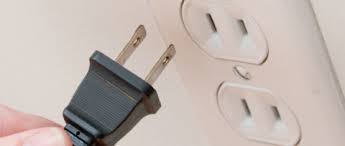
4 Ways to Disconnect and Get More Done Without Unplugging Completely
You check your email as soon as you wake up, and send text messages from just about everywhere. But if you’re not taking a break every now and then, you could be hurting your effectiveness, says Joanne Cantor, founder of Your Mind on Media, a Madison, Wisconsin consulting firm that helps companies manage cyber-overload.
Research backs that claim: A 2012 study by the University of California, Irvine and U.S. Army researchers found that being cut off from work email periodically significantly reduces stress and increases focus.
We know: You own a business. People depend on you. You can’t disconnect. But Cantor says that’s not really true. Maybe you can’t turn off your smartphone entirely for a week, but here are five ways you can buy some tech-free time.
1. Recruit a gatekeeper. “Our gadgets take control,” says Cantor. “Business owners used to have secretaries and other gatekeepers who understood the critical people who had to get through and had tactful ways of running interference with those who could wait,” she says.
An assistant or trusted second-in-command can field calls while you’re working on a project that needs focus or when you simply need a day off. If that’s not an option, change your outgoing voicemail message to tell callers you’re unavailable and let them know when you’ll be available to answer their calls. And, don’t forget to turn off instant messaging.
2. Schedule your prime time. The best time to be tech-free is the time when you are most productive or creative, she says. Perhaps you’re sharp as a tack first thing in the morning or get your second wind at 3 p.m. Think about your most productive times and block out those windows as you would an important meeting, she says. A disconnected hour or two several times a week can make a tremendous difference in your creativity, focus and the quality of your work, she says.
3. Use a distraction-blocking app. Even as our smartphones, tablets and laptops seek to monopolize our time, a collection of apps has emerged to help us disconnect. AntiSocial and Freedom are site blockers, making any time-sucking sites (like Facebook) unavailable for as long as you choose.
iPhones running the iOS6 platform and apps like I’m Sleeping and Ultimate Call Block offer “do not disturb” functions, but also allow you to whitelist certain people (your gatekeeper, spouse, or your child’s school for example) to bypass your settings and always ring through.
4. Change your culture. If you’ve spent time cultivating an “always on” workplace, it’s not going to change overnight, says Cantor. But change is possible. Work on a communication hierarchy for your team, setting boundaries for essential and non-essential contact.
For example, if the issue is urgent, reach out with both phone and text messages. Non-urgent issues will be communicated by email with a “please respond by” time. No non-urgent messages of any kind will be sent between 8 p.m. and 6 a.m. That might not be your company’s game plan, but you can set boundaries.
“It has to be tailored for your workplace, but there has to be a discussion and agreement so that everybody’s on the same page about communication,” she says.






Recent Comments